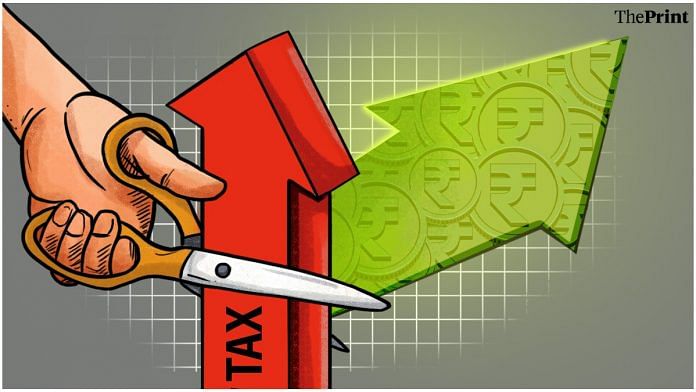In the Union Budget for 2022-23, reducing tax rates and simplifying the tax regime for households will help spur demand and boost the economy.
Economic recovery has been gaining momentum and many indicators are showing a pick-up. In such a situation, households and investors should be given a budget that is growth-oriented and stimulates demand further.
Cut tax rates to boost demand
Under present conditions — when consumption still hasn’t reached pre-pandemic levels — the Budget should consider cutting tax rates to spur demand. Cutting taxes can increase demand faster than government spending can. At a time when collections from the Goods and Services Tax (GST) have been robust, the government could consider providing some relief to households through cuts in income tax rates. While GST collections showed some moderation during the first and second waves of the pandemic, the current financial year (FY 22) saw the highest average monthly GST collections at Rs. 1.18 lakh crore. This is a big jump from the average monthly collections of Rs. 98,000 crore in 2018-19. This gives the government scope to cut income tax rates.
Re-look at the dual tax regime
The government introduced a new optional tax regime starting from April 2020 that prescribed reduced tax rates for individuals if they chose to forgo specified tax deductions and exemptions. In particular, the new regime doesn’t allow exemptions and deductions such as house rent allowance, deductions under Section 80C and 80D, and deductions on home loan interest payments.
While the old regime has three slabs and higher rates, the new regime has six slabs and lower rates. According to tax professionals, only a small proportion of individual taxpayers have opted for the new tax regime. Most households do not want to forgo the deductions for social security allowed under Section 80C. The Budget may be an opportunity to revisit the new tax regime to simplify and make it more attractive for households so that a shift to a single tax regime can be made.
Also read: Govt stake in cash-strapped Vodafone Idea could be a boon — provided it has an exit plan
Tax rebates to spur housing demand
The Budget could also spur demand for housing by providing tax benefits on repayment of the principal amount and interest amount on home loans. Currently, repayment of the principal amount in a home loan qualifies for deduction under Section 80C. Section 80C already covers a number of investments such as life insurance policies, Provident Fund (PF), and Public Provident Fund (PPF), and has an upper limit of Rs. 1.5 lakh per annum. It becomes difficult for a homebuyer to seek a tax benefit under this section. There is a need for a separate section for deduction for home loan repayment. Similarly, on the tax relief for interest payment on home loans, there is a cap of Rs. 2 lakh per annum. Since home loans are larger in size, buyers are unable to take advantage of this rebate.
Standard deduction
The standard deduction for the salaried class was abolished in FY 2005-06 and was reintroduced from FY 2018-19 onwards at Rs. 40,000. The standard deduction was later enhanced to Rs. 50,000. The amount of deduction is low, given the rise in inflation and rise in expenditures of households owing to the Covid-19 pandemic. The Budget should consider raising the standard deduction limit to provide relief to households. There are indications that the government might increase the standard deduction limit. A more fundamental reform could be to introduce inflation adjustments for standard deductions. As an example, the US government (Internal Revenue Service) announces annual inflation adjustments for 60 tax provisions including the standard deductions.
Rationalising taxation related to stock markets
Households are now a serious investor in stock markets. The securities transaction tax (STT) should be abolished as it was introduced in place of a long-term capital gains tax in 2004. Now we have both a long-term capital gains (LTCG) tax, introduced in 2018, and STT. The cost of transaction in Indian markets is high due to the presence of multiple taxes. The government should reduce LTCG and STT or abolish them to further stock market penetration.
At present, long-term capital gains (LTCG) arising from the sale of shares and equity mutual funds are taxed at the rate of 10 per cent if they exceed Rs. 1 lakh in a financial year. The budget should revise upwards the exemption limit of Rs. 1 lakh to give an impetus to retail sector participation in stock markets.
These measures will boost sentiment, ease the cost of doing business in India and promote investments.
Ila Patnaik is an economist and a professor at National Institute of Public Finance and Policy.
Radhika Pandey is a consultant at NIPFP.
Views are personal.
Also read: 5 factors will shape Indian economy in 2022, and you can be cautiously optimistic despite Covid



